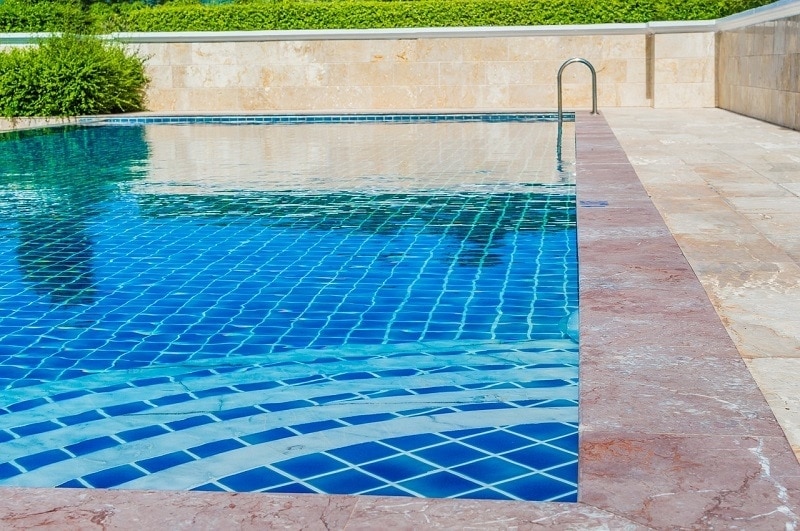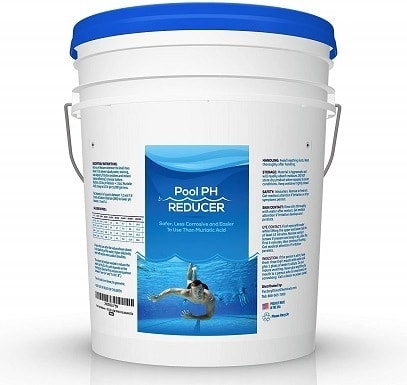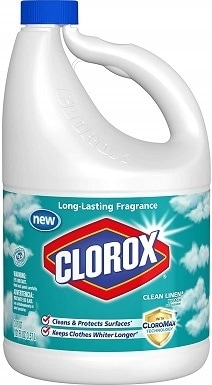3 Different Types of Pool Shocks: Which One’s Best?
-
Pete Ortiz
- Last updated:

When it comes time to shock your swimming pool, you’ll find that there are three main types of pool shock available, but you may not know which one to use or when to use them. We are going to help you answer these questions and help you decide which one is right for your pool.
Join us while we take an in-depth look at these three types of shock and explain a little about how each works and why one might be better than the other to help you make an informed purchase that will lead to a cleaner, healthier pool.
The 3 Types of Pool Shock
These are the three different types of pool shock that we are going to cover in this guide.
1. Calcium Hypochlorite
We create calcium hypochlorite from mixing lime with chlorine gas. This chemical contains 65 to 75% chlorine. Calcium hypochlorite works by disrupting the inner workings of bacteria and destroying cell walls of organic material. It has been a water sanitizer for over 100 years. It is cheap, easy to find, and works very well, which is why it is the most popular type of pool shock in use today.
The downside to calcium hypochlorite is that it has a very high pH, which can change the pH balance of your water. You may need to add a pH decreaser to keep your water within the ideal pH range. Another downside to calcium hypochlorite is that it contains calcium, which is a water hardener. This calcium may wind up in hoses or other areas of your pool as a hard lime deposit.
- Widely used
- Inexpensive
- Works well
- Contains calcium
- High pH
2. Dichloroisocyanuric Acid
Dichloroisocyanuric acid is also known as Dichlor and is another type of chlorine shock. Dichlor is a main ingredient in many types of bleach, and it also contains cyanuric acid, which is chlorine stabilizer. When using dichloroisocyanuric acid, you don’t have to worry about how much stabilizer is in the pool. However, the stabilizer will stay in the water, and having too much stabilizer will reduce the effectiveness of your chlorine. Usually, this type of chlorine only comes in bleach form, so many people don’t regard it as an actual pool shock. However, if your pool does not have a lot of chlorine stabilizer already in it, dichloroisocyanuric acid can be a very inexpensive way to shock your pool.
- Inexpensive
- Contains cyanuric acid
- Not sold as pool shock
3. Sodium Monopersulfate
Sodium monopersulfate is also known as MPS shock. This shock is non-chlorine-based, and while it is an oxidizer, it is not a sanitizer. This chemical has no odor, dissolves quickly, and it does not create combined chlorine. You can use this chemical with chlorine or bromine treated water. It does not burn up during the day like chlorine, nor is it affected by warm water. You can reenter the water as little as one hour after using this type of shock.
However, this type of shock doesn’t sanitize or kill any germs, so it is not going to work as well as regular chlorine shock, and it can lead to false readings about the amount of free chlorine and combined chlorine when you test your water using a test strip.
- No odor
- Dissolves correctly
- Doesn’t create combined chlorine
- Doesn’t sanitize
- Not as strong as chlorine
- Leads to false reading on test strips
In Conclusion
We recommend using calcium hypochlorite as your pool shock because it’s inexpensive and readily available. It’s also the most effective sanitizer and oxidizer. It works overnight and burns off quickly in the sunlight so you can return to your pool promptly. You can use Dichlor in an emergency, but we can’t think of what that emergency would be. You can add MPS shock to your pool from time to time to help reduce the amount of combined chlorine in your pool, but doing so really only amounts to an extra step that isn’t required.
We hope that you have learned something new about the different types of shock available and have chosen one for your pool. If you would recommend this guide on pool shock, please share it on Facebook and Twitter.
Featured Image Credit: toodlingstudio, Pixabay
Contents







